We venture out into the big blue to check out the latest developments in Marine Protected Areas - or MPAs - those areas of the ocean set aside to let wildlife recover and thrive. Hot off the press, a new report launched in Nagoya tells us how many MPAs there are globally, where they are, and how much of the ocean they cover. Have we reached the 10% target yet? Plus we find out about a new generation of MPAs soon to appear around the UK coast and track down bottlenose dolphins and a gaggle of sea birds in a marine reserve off the Welsh coast.
In this episode
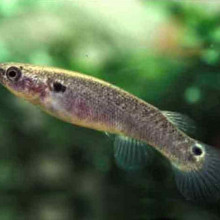
01:21 - Killifish kings of the mangroves
Killifish kings of the mangroves
This month a really interesting story has come out about about mangrove killifish. These tiny fish are native to Florida and Central and South America and as their name suggests they live in mangroves in coastal areas. These killifish are really quite amazing because they can survive huge differences in salt levels in the water they live in and can survive *out* of water for up to several weeks!
A team from the University of Guelph in Ontario, Canada wanted to find out how they manage to survive out of water. Most fish can't live out of water because as soon as they're in air, their gills collapse because of the surface tension of the water on them and they can no longer get enough oxygen to survive, get rid of waste product or maintain their internal ion or salt balance. The team led by Danielle LeBlanc hypothesised that the fish must be exchanging water, ions and oxygen across their skin instead. They tested the fish by keeping them in humid air on a moist surface of either fresh or salt water for 9 days, and measuring the physiological changes.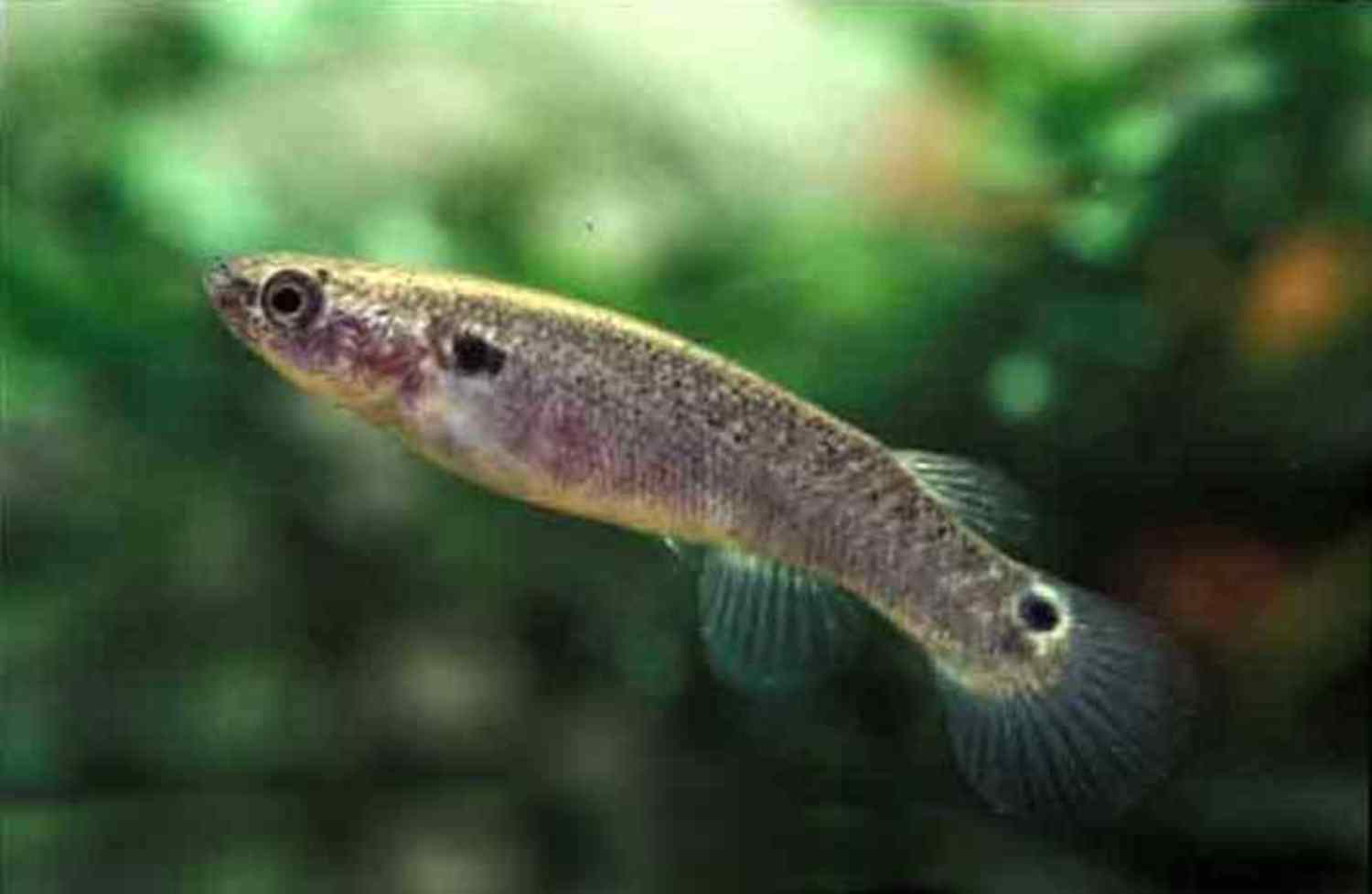
They found that the fish had as many ionocytes - those are cells for exchanging ions and maintaining salt balance in the body - in their skin as in their gills, and that the cells increased in size when the fish were exposed to air. And by using radioactive isotopes of sodium and hydrogen, they showed that ions were definitely being exchanged across the skin when the gills were out of action. This allowed the fish to mostly maintain their ion balance. The gill physiology also changed when the fish were in air, with cells clumping the lamellae together to protect them and reduce the surface area for water loss. Both the changes in the skin and gills were reversible when the fish were put back into water.
So it's great news that we're now understanding the killifish adaptations to cope with this hugely changeable environment of the mangroves a bit better.
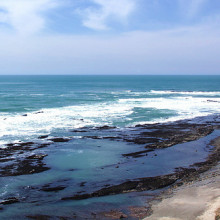
04:04 - Surfing the world's nature reserves
Surfing the world's nature reserves
At the click of a mouse, the Protected Planet website lets you hop from Yellowstone National Park, to the Seregenteti, to Annapurna, and thousands of beautiful and biodiverse corners on the globe in other little known protected areas, both on land and in the sea.
I've been having a play with it, and it's a bit like Google Earth meets Trip Advisor, pimped for protected areas.

The interactive site brings together all sorts of information from databases like the Global Biodiversity Information Facility and
the World Database on Protected Areas, and mixes that together with perhaps more familiar stuff from Wikipedia and Flickr. People who have been to these protected areas can upload photos, write travel tips, and recommend interesting spots to visit.
Each entry gives a flavour of what the protected area looks like and what you might find if you went there, as well as information about how big it is, when it was set up and so on.
It's aimed both at wannabe eco-tourists who are can experience the world through their computer screens, as well as explorers searching for their next destination - the idea is to raise awareness about some of the lesser-known protected spots that could potentially benefit from well-managed tourism, bringing in more visitors and more tourist dollars.
And it's also being touted as a serious conservation tool, for governments, scientists, and NGOs who can download the latest information about protected areas - they even recon that visitors can play an important research role by logging on and reporting which species they've seen in different places
Typing in the word "marine" brings up with 1 146 results, including enticing looking spots like the Ulunikoro Marine Reserve in Fiji, the Nguna Pele Marine reserve in Vanuatu, and the Gwaii Haanas National Marine Conservation Area in Canada, which we talked about a few months ago on Naked Oceans.
Check it out. It'll definitely get you dreaming of far away places.
Find out more
Protected Planet
Protect Planet Ocean
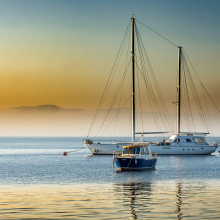
07:39 - Global MPAs - latest update
Global MPAs - latest update
with Mark Spalding, The Nature Conservancy
A new report provides the latest stats on how much of the oceans are currently protected and we find out whether global targets have been met.
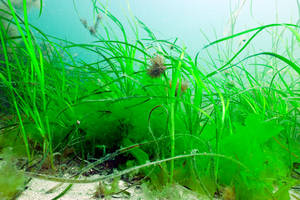 Find out more
Find out more
Mark Spalding, The Nature Conservancy
New book
Global Ocean Protection: Current Trends and Future Opportunities (PDF)
Mark - This latest study has come up with a new global total for marine protected areas. Just over 5800 Marine Protected Areas worldwide. They cover just over 4.2 million square km of the world's oceans. Those sorts of figures are pretty hard to vizualise. It is a very large area. But actually, the world's oceans are so vast that it really is still more like a drop in the ocean. It's about 1.2% of the total ocean surface.
Helen - 1.2%, that doesn't sound like a lot. But then 8 years ago there were plans to protect quite a lot more than that by now.
Mark - Targets were set by the international community, and really these are set by governments, and they are meant to be incentives and drivers for change. And it was recognised that we needed to do a lot more, particularly in the oceans. It was also recognised that we had a long way to go in the oceans. But the target was set to try and establish 10% of the oceans as being effectively managed for conservation. So we've only got to 1.2%, so we're way off target.
It's a little bit even more complex than that. They talked about representative protection. So in other words they didn't want just an overall 10% figure which you could put all in one place. They wanted us to capture all the different aspects of marine biodiversity from the tropics to the Arctic and the Antarctic.
Helen - And so where have our marine protection efforts been focused so far?
Mark - Perhaps not suprising, the bulk of the effort has been very close to shore. If you confine yourself to looking just at the coastal strip, a narrow 2km belt around the world's coastlines, we've actually met the target and exceeded it. We're up to 12% globally. But as you look off shore, you look across the continental shelf the number drops off rapidly, only 4.3% of the shallo waters out to 200m depth. And of course as you look into the offshore waters, off shelf and into the high seas, the areas that are owned by no particular country as it were, the figure drops pretty close to zero.
Really we've got this very land-centric view of the oceans still in the way we've been declaring Marine Protected Areas. And the high seas jump out at us as being a real hole in this effort to secure a future for the oceans.
Helen - Another thing that jumps out of the data is that it looks like we've now got a handful of really enormous MPAs. Now sure, that has to be a good thing, doesn it?
Mark - It's a great thing and we mustn't do that down. We list in this report, the 24 sites that are the size of Belgium or larger. They're pretty whopping sites. Sites like the Great Barrier Reef. And they have probably been the major contributor to the acceleration of ocean protection. But what we're missing in that kind of view is the small sites that are near to people.
Marine Protected Areas aren't just for nature but people stand to benefit hugely from Marine Protected Areas. One of the stories that's stood out over the years is a little island in the Philippines called Apo Island where the local community have set aside a chunk of their coral reef with no fishing whatsoever. And what they found is that their overall fish catch ahs gone up and up. And that's simply the result of protecting this little investment of fish, larger fish which breed well and export both adults and larvae to the surrounding reefs.
So, let's try and get these MPAs not only in the wilderness, in the last great ocean spaces. But as we move them closer to home, closer to where people live and depend on the sea, we're going to start I think getting much more buy-in, much more enthusiasm for Marine Protected Areas and I hope the thing will snowball, and people will learn from what's going on next door and want more of the action themselves.
Helen - And talking of enthusiasm to set up protected areas. It seems the developed world is actually lagging behind the developing world, which is really not what you would expect given the amount of resources that presumably richer countries have to devote to things like marine conservation?
Mark - Both from a resources perspective and from a lot of the science has been done by the wealthier nations that have funds for doing the research, but the people putting it into practice have been mostly based in the tropics. It seems to be a huge struggle to get nearly as far in the temperate regions of the world. We in the west could learn from the developing countries in the tropics. We need to have these examples on the ground that people can learn from. It's an uphill struggle to get the first MPA in because no-one quite trusts that they'll really do what we say they'll do. But once you start getting a few and people are beginning to benefit, then I think the whole thing should be a runaway success.
Helen - Let's hope so. Now, even if we reached that 10% target that we've been talking about, what about the other 90% of the oceans outside protected areas? Is protecting one tenth of the oceans really going to be enough to keep them healthy?
Mark - 10% clearly isn't enough. What we've got to do is think more holistically about the entire ocean surface. In Negoya they've kind of agreed to keep the 10% target but extend the deadline out to 2020, which could sound like a bit of a failure, but given that there were some efforts by some countries to actually drop that target completely or drop it down, one country was talking about dropping it down to only 6%, I think keeping the target is probably a sensible thing to do.
We really must remember though that target is a waypoint not an end point. We need to think about the broader ocean space which we use and the end pint must be 100% oceans targeted for sensible joined up management. That means getting the fisheries agencies talking to the planning agencies talking to the conservation folk. And I think from a general public point of view it means a much larger constituency really needs to start thinking of the ocean as being theirs, it belongs to us all. We all really need to be concerned about it and feel a part of it.
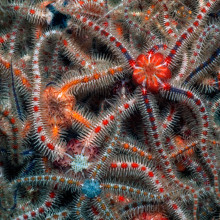
14:36 - An English perspective on MPAs
An English perspective on MPAs
with Jen Ashworth, Natural England
A new generation of MPAs is soon to appear around the coast of England. We find out about some of the species and habitats that will be protected and how members of the public are getting involved.
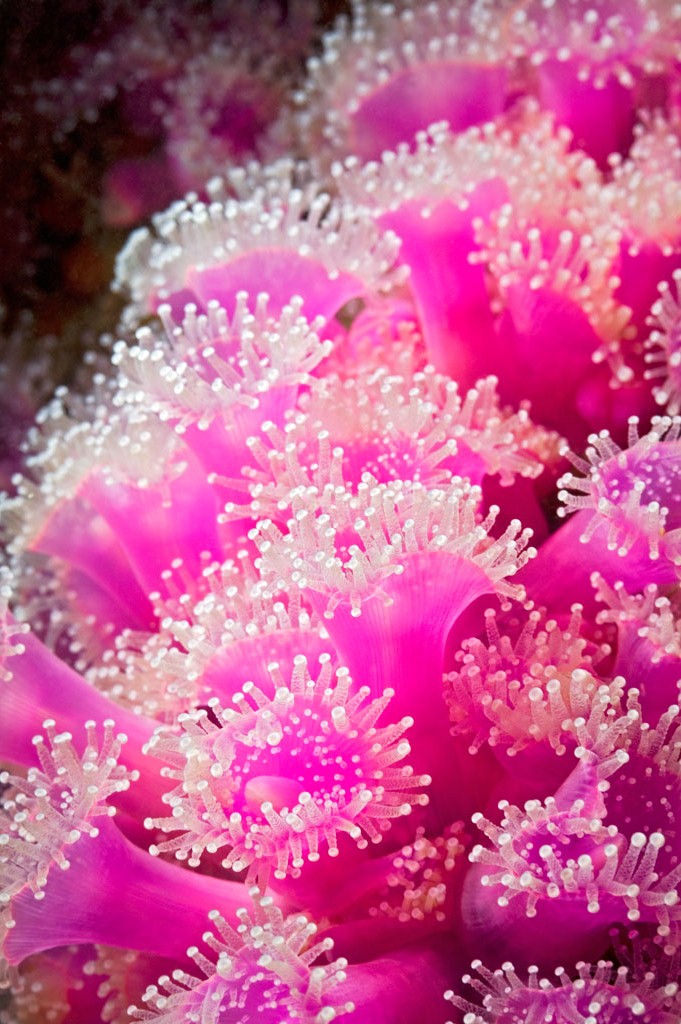
Find out more
Natural England and the marine realm
Marine Conservation Zone interactive marine map
Jen - Along with many other countries, the UK has signed up to international agreements to create a network of Marine Protected Areas by 2012.
In England's inshore waters we already have 55 Marine Protected Areas designated under European legislation and these are designed to protect habitats and species of European importance that are thought to be particularly special.
These are things such as reefs, sandbanks, intertidal mudflats, also lamprey, seals, and also a wide range of marine sea birds.
In 2009, the UK government enacted the Marine and Coastal Access Act and that gives us the tools to create new national marine protected areas known as Marine Conservation Zones.
Within these new national marine protected areas, we're going to be able to protect a much wider range of habitats and species and really look at all the exciting wildlife in our seas. For example we want to try and protect habitats such as seagrass beds, coastal saltmarsh, also species such as seahorses, eels, the pink seafan and the sunset cup coral.
Helen - Well, I guess it's easy to see how marine protected areas will work for areas of fixed habitat like seagrass beds and things like that as well as these species that stick themselves to the seabed like pink sea fans. But what about the more mobile species - do marine protected areas work for them as well?
Jen - It's not a simply yes/no answer. If we wanted to protect those species such a cod or herring or something like the common skate, we'd need really large marine protected areas and those aren't necessarily practical.
What you can do, however, is protect key areas important for life history stages. SO for example areas where these species spawn, or nursery areas where we can protect the juveniles. So the marine protected areas can play a role in looking after these species.
Helen - There's quite a varied language for marine conservation when we're talking about these sort of protected areas. We've got marine parks, marine reserves, no take zones, things like that. Are these really just variations on a theme or are there actually some important differences between all these different terms?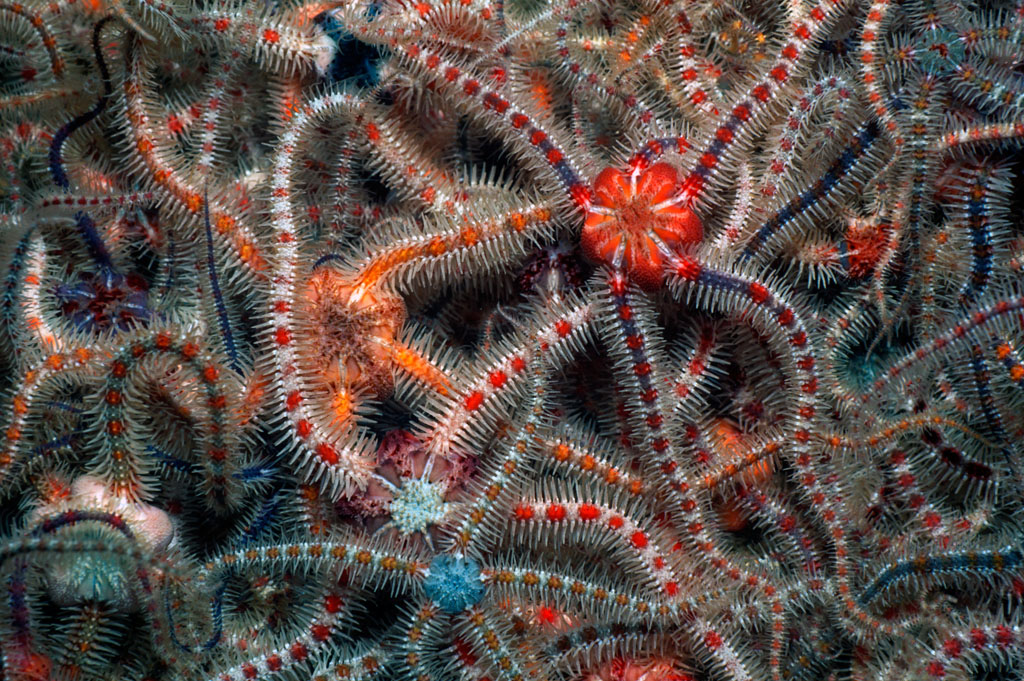
Jen - Well, just like there's different terms for protected areas on land, such as national parks or nature reserves, it's the same in the sea.
We tend to use marine protected areas as the umbrella term for all nature conservation designations in our seas. There's actually a global classification that's been created by the IUCN, the International Union for the Conservation of Nature, and that ranges from strict nature reserves where almost no activities are allowed to managed resource protected areas where your aim is for the sustainable use of marine resources.
Helen - Fantastic. So we can carry on talking about marine protected areas as a kind of general term. And I guess, once you've decided what you want to protect, you've got all these wonderful species in England, how do you go about decided where those MPAs should be and how big they should be, how many you need and so on?
Jen - Well, those are really key questions that we've been facing, Helen. And we have a series of network design principles that we're using in England and surrounding offshore waters to identify marine protected areas.
The answers are usually part science and part policy. And it's Natural England's role, along with the Joint Nature Conservation Committee, just to focus on the science of those.
So for example, Natural England's undertaken research to look at how big a protected area might need to be to protect a population of animals or plants and also how far apart marine protected areas should be in order to maximise connections between them. How many replicates, how many different protected areas of the same habitat you want to have just in case something happened, a disaster happened to those areas.
Helen - And how is the science of marine protected areas? It's often said that we know much more about natural systems on land than we do on land than in the sea, which makes sense because we live on land. But do we have enough information to feed into these models of how we're going to make protected areas in the sea?
Jen - That's a good question and one of the principles we're using is that you should use the best available evidence that you have. We've been undertaking research within Natural England to help answer the various science questions.
But also the Government, the Department for Food and Rural Affairs, Defra, have run a big project trying to create new habitat maps, new maps of distributions of species, and other habitats to give us even better information. And the Joint Nature Conservation Committee, who are our partners, have also been creating new habitat maps and undertaking new science as well.
Helen - So we're not just waiting for that information, we're bringing it together and using what we've got to get these protected areas really happening now?
Jen - Yes, we can always collect new and better information but at some point we have to make the decision to go ahead and look after our marine environment on the best available information we have at the time.
Helen - For the marine protected areas in England, the rather exciting aspect to all this is that you're actually asking members of the public to help you decide where these MPAs are going to be. Now, how does that work and what are the benefits of what I guess we call a "bottom-up" approach to conservation?
Jen - Well, this bottom-up approach is being used to identify the new national marine protected areas - the Marine Conservation Zones.
We think it's really important to ask people who use to sea, where they want to see protected and give them a say in the decisions that are being made.
This process worked really well in California, and we wanted to use something similar in England.
Natural England and the Joint Nature Conservation Committee set up the Marine Conservation Zone Project to do just this. Within that there are four regional projects around the coasts of England whose task it is to involve stakeholders, people who use the sea, such as fishermen, wind farm companies, oil and gas, and also people who use it for recreation such as divers, snorkelers, sea kayakers, sea anglers, to tell us where they think they'd like protected areas to be and where they'd not like them to be.
And we think this is the first time this engagement with and involving people has been done on such a large scale. By involving people from the beginning, you can try and minimise the impacts on their livelihoods or their business.
You can also increase compliance, if people have consensus about where they want the protected areas to be, it's more likely that those MPAs are going to be successful.
We can also access a wider range of information. People who use the sea, know a lot about the sea, and by gathering that information it allows people to make better decisions.
Helen - Lots of exciting stuff going on in marine protection in England. How do these plans fit into a slightly wider scheme, I guess we've got to fit this within what's going on in other parts of the oceans nearby in Europe.
Jen - Yes, well the marine protected areas being identified in England contribute to a UK network of marine protected areas, along with other marine protected areas from Scotland, Wales, Northern Ireland, and offshore waters.
Then the UK will contribute to better marine conservation in Europe. For example, there's various bits of European legislation that all European countries with a sea area are implementing.
We have the Habitats and Wild Birds Directives that create marine protected areas of European importance.
And we also have the new Marine Strategy Framework Directive, which gives a great opportunity to get all Europe's seas in a good environmental status by 2020.
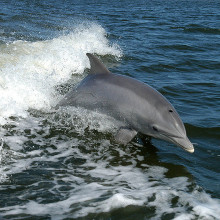
22:27 - Dolphins and bird life in Cardigan Bay
Dolphins and bird life in Cardigan Bay
with Steve Hartley, Cardigan Bay Marine Wildlife Centre
Onboard a survey vessel with the Cardigan Bay Marine Wildlife Centre, Helen catches up with some ocean celebrities living in a marine reserve off the Welsh Coast.
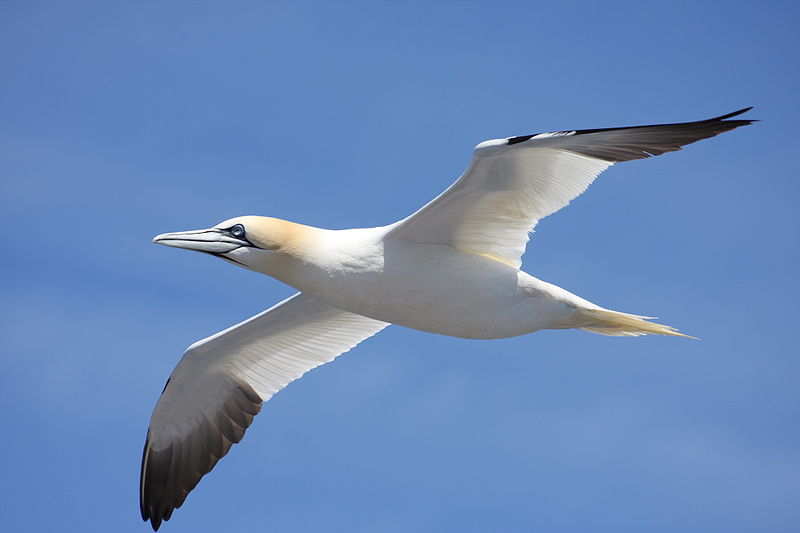 Find out More
Find out More
Cardigan Bay Marine Wildlife Centre
Cardigan Bay Special Area for Conservation
Helen - Well I'm currently bobbing about on the Irish Sea in Cardigan Bay off the west coast of Wales. And I'm on a survey boat. I've joined the Cardigan Bay Marine Wildlife Centre on one of their daily trips out into the bay to track down and see if they can find any of the wonderful marine life that lives in the bay. I;m with various members of the public who come along and help with these surveys. And I guess we'll just have to wait and see what we find, while holding on very carefully so that we don't fall in because the waves are quite big today...
Well, we have our first sighting. It's a bit far away and it's pretty choppy, but we're pretty confident that it's a bottlenose dolphin. Possibly a mother with its calf, which means we have to be particularly careful and not get too close.
No I still can't see it. Ah yes, there it is! Yes, there was a dark fin just appeared and disappeared in the waves. Oh there it is, yes! Fantastic! It's a mother and a calf. Wonderful, a new baby dolphin came to say hello. How nice. And there it is again, yey! It came up really close that time.
The water is sort of... Oh... [laughter] Oh dear, I missed that. Luckily it didn't get me but that was an enormous wave. Two of the kids are now absolutely soaked but they seem to be quite enjoying that so I think that's alright. I'm glad I asn't standing over there. I'm not in my wetsuit. Much fun being had by all.
We've come across and we're actually just looking for some of the marine birds that live in the area too. This is a really important nesting site for lot sof marine birds, and lots of auks apparently. We don't have any puffins, but we have lots of things like guillemots, and kittiwakes, cormorant and shags, and various other winged creatures that also enjoy this area of wales, this very biodiverse and productive part of the country.
We just saw a gannet diving into the sea with it's amazing wide wings. It just turned around and dropped into the water like an arrow. I think it caught something too. Beautiful.
We've just come into the harbour now, we've moored up so it's nice nad smooth away from the waves. And I've maaged to grab Steve Hartley, who was drivin the boat for us. He is the founder and the manager of the Cardigan Bay Marine Wildlife Centre. And this is a really important part of the British coast isn't it? We've got all sorts of important areas that have been designated in Cardigan Bay.
Steve - This is the first stretch of the British coastline that has bee designated as a Marine Heritage Coast.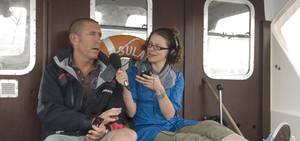
Helen - And what does that actually mean?
Steve - Protection wise, the Marine Heritage Coast is more raising awarness than having something that is in law. But the Marine Heritage Coast was designated to raise awareness of the area's unspoilt natural beauty and wide variety of wildlife that we have here. And we're very proud of that designation.
If you come here in May-June when we've got the cliffs absolutely alive a huge variety of different birds nesting, and then you can be just off the headland there and be surrounded by bottlenose dolphins foraging, and then look over on the rocks you'll have Atlantic grey seals hauled out and porpoise further away.
It really is a special area and that's why it was designated Britain's first Marine Heritage Coast. Offshore here now we've got an area that's been designated by Europe as an SAC, that's a Special Area of Conservation, and that area's been designated again primarily because of the bottlenose dolphins we've got here but there's other species also that it's designated for.
Helen - So that is a protected area, there are protection measures to help preserve and protect those dolphins species and the other important creatures in the bay.
Steve - The government are duty bound to make sure that activities in that area, in the SAC, don't threaten those species. And I'm not sure that's always happening.
Helen - You are concerned that there are threats to these species that are ongoing. What are the sort of threats that they're facing?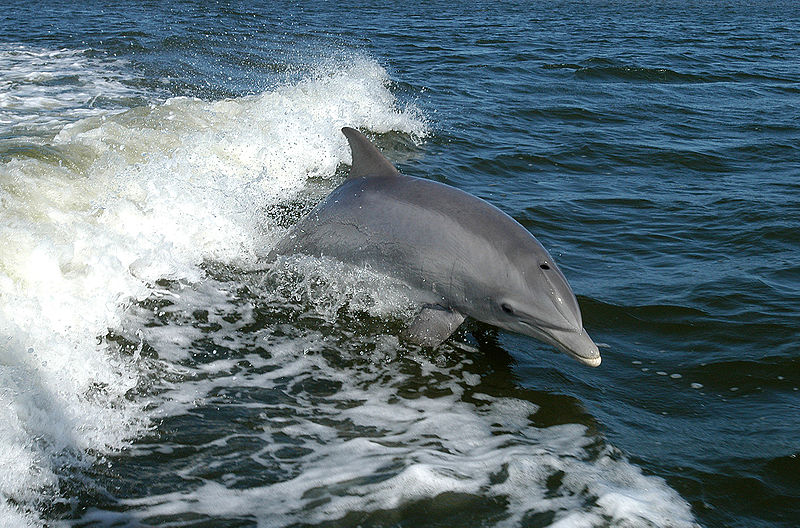
Steve - There's been scallop dredging in Cardigan in the last 30 years. 30 years ago I worked on a scallop dredger but things went pretty quiet then, because it's very much a boom and bust industry. So we had a lot of activity 30 years ago, things have gone very quiet then for 20 odd years or more and then in the last couple of years we've had quite huge numbers of dredgers coming in dredging in Cardigan Bay.
The year before last we had 80 odd boats come down, huge, of all sizes too, dredging up and down Cardigan Bay. Several groups got together and put in complaints to the British Government saying that surely they're not looking after the SAC properly if they're allowing this to happen.
So last season there was a greatly reduced effort in Cardigan Bay. We had a lot of areas closed to scallop dredgers but they still opened up a box right in the middle of the SAC, a Special Area of Conservation. And everybody knows scallop dredging is one of the most destructive forms of fishing, certainly to the sea bed, that there is.
I know how destructive it is, I've worked on a dredger. I've been there lifting the dredges in, emptying them on the deck, and then shovelling the seabed over the side. It is destructive, there's not two ways about it. And the more it goes on in an area, the more it destroys the sea bed and the habitat and the species that live there.
Helen - And presumably those are all the species that are important for the wonderful big creatures we see at the top of the food chain, the dolphins, the porpoises, they rely on all these smaller creatures that presumably are being destroyed and dug up by these scallop dredgers.
Steve - Well it's all part of, it's the bottom of the food chain. And, you know, if they're dredging up sandbanks out there then we're loosing the sand eels. Well, what relies on the sand eels? The bird colonies rely on the sand eels, the mackerel that come in huge shoals of mackerel, come in and feed on the sand eels. The larger animals feed on the mackerel. It's the whole food chain, and also there's the habitat. They've proved by experiments the more you dredge an area the more it changes the actual seabed itself.
What we need is to thoroughly survey the bay. And if there are areas that we can genuinely say, well these areas can be dredged without long term damage to the broader bay itself then fair enough, let them fish those areas in a sustainable way.
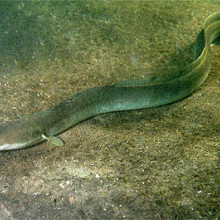
29:35 - Critter of the Month - European Eel
Critter of the Month - European Eel
with Dan Laffoley, IUCN
The illusive and critically endangered European eel features as our critter of the month.
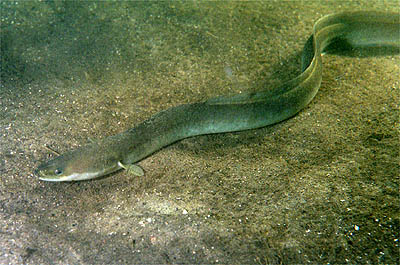
Find out more
Anguilla anguilla, information on the
IUCN Red List
Hi. My name's Dan Laffoley. I'm marine vice chair of the World Commission for Protected Areas for IUCN, that's the International Union for the Conservation of Nature. And my critter of the month is the eel.
Now why might you ask, the eel? You're probably familiar with it in terms of a muddy stream or estuary, but the eel really is an ocean champion and really epitomises the challenge we have with protecting the seas.
When it's ready to spawn, it leaves the estuaries, goes into the sea, stops feeding, it even changes its shape, its eyes get bigger, and its colour gets different so it can be disguised as it goes on perhaps a 4000 mile migration to the Sargasso Sea.
And in this amazing floating golden rainforest in the North Atlantic, that's where new eels are spawned and born. And then over the next 7-11 months, they drift back slowly towards the UK and finally transit back into the estuaries.
And they're ocean champions because they tell us that the ocean and the land are connected. And they very much reflect in what I try and do in my role globally which is try and explain why the 70% of the earth covered by the ocean really matters. And in a sense, like the eels, so we are dependent on the ocean.
For every breath we take, and every sip of water we drink it links us back to the seas. And in a sense the eels shows us that if there's no blue there's no green. If we didn't have the ocean we wouldn't have eels.
Eels also epitomise the challenge we have to conserve a species that is so dependent both in terms of freshwater and in terms of marine waters.
And that really brings home to us the challenge we face in terms of understanding just what the ocean does for us and in understanding that we need to care so much more for the ocean if we're going to have a bright future on planet earth.









Comments
Add a comment